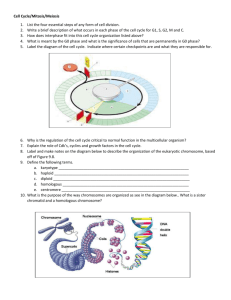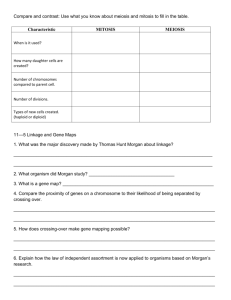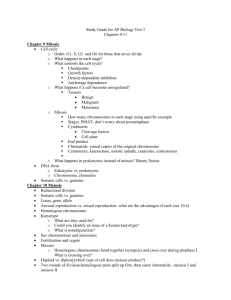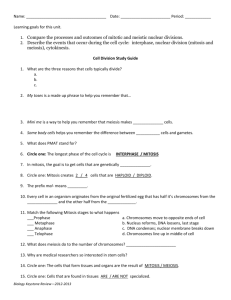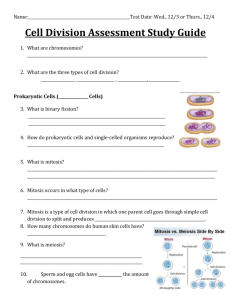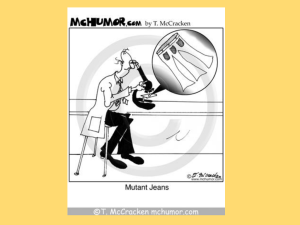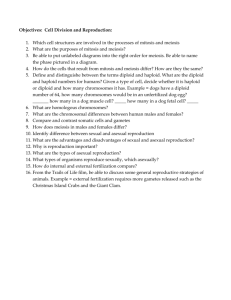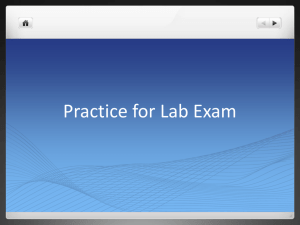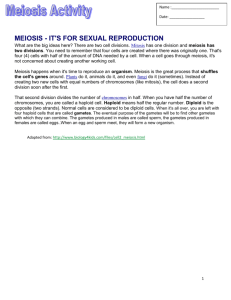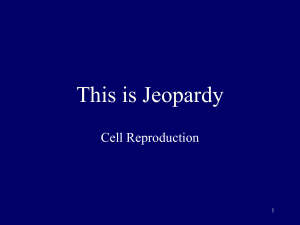Chapter 11-4 Yet Another Study Guide Key
advertisement
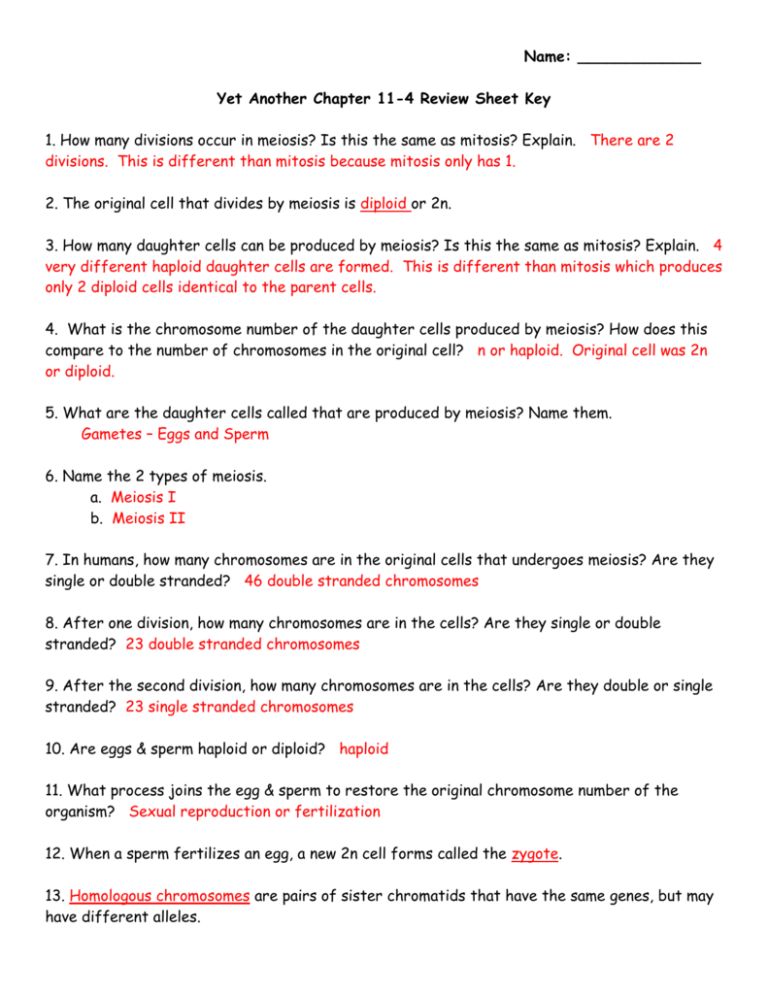
Name: _____________ Yet Another Chapter 11-4 Review Sheet Key 1. How many divisions occur in meiosis? Is this the same as mitosis? Explain. There are 2 divisions. This is different than mitosis because mitosis only has 1. 2. The original cell that divides by meiosis is diploid or 2n. 3. How many daughter cells can be produced by meiosis? Is this the same as mitosis? Explain. 4 very different haploid daughter cells are formed. This is different than mitosis which produces only 2 diploid cells identical to the parent cells. 4. What is the chromosome number of the daughter cells produced by meiosis? How does this compare to the number of chromosomes in the original cell? n or haploid. Original cell was 2n or diploid. 5. What are the daughter cells called that are produced by meiosis? Name them. Gametes – Eggs and Sperm 6. Name the 2 types of meiosis. a. Meiosis I b. Meiosis II 7. In humans, how many chromosomes are in the original cells that undergoes meiosis? Are they single or double stranded? 46 double stranded chromosomes 8. After one division, how many chromosomes are in the cells? Are they single or double stranded? 23 double stranded chromosomes 9. After the second division, how many chromosomes are in the cells? Are they double or single stranded? 23 single stranded chromosomes 10. Are eggs & sperm haploid or diploid? haploid 11. What process joins the egg & sperm to restore the original chromosome number of the organism? Sexual reproduction or fertilization 12. When a sperm fertilizes an egg, a new 2n cell forms called the zygote. 13. Homologous chromosomes are pairs of sister chromatids that have the same genes, but may have different alleles. 14. Meiosis reduces the chromosome number by half, while fertilization restores it. 15. In Meiosis I, what separates? Homologous chromosomes 16. In Meiosis II, what separates? Sister Chromatids 17. Name these stages of Meiosis. Prophase I Metaphase I Metaphase I Anaphase I 18. Name at least 3 things that happen in Prophase I. Homologous chromosomes pair up and form a tetrad, spindle fibers form and attach to the chromosomes, crossing over takes place. Nuclear membrane disappears, centrioles move to opposite poles 19. Label this picture in 3 different ways. 20. Once tetrads form, what happens to the homologous chromosomes? What is this called? After the tetrad is formed, they exchange bits and pieces with one another, called crossing over. 21. Crossing-over results in genetic variation in the offspring. 22. What happens during Metaphase I? In metaphase I one, the pairs of homologous chromosomes line up at the equator. 23. At the beginning of Meiosis II, each cell has how many homologs of each chromosome? There is only one of each homolog. 24. The gametes at the end of Meiosis II will have how many copies of a gene for a trait? Their will be only one copy of a gene. 25. Name the stages in Meiosis II. Prophase II, Metaphase II, Anaphase II, Telophase II 26. What happens to the sister chromatids during Anaphase II? They are pulled to opposite poles 27. Meiosis results in 4 haploid cells called gametes that have one copy of each chromosome and each allele for each gene in different . Gamete formation 28. Gametogenesis that produces sperm cells is called spermatogenesis. 29. Gametogenesis that produces egg cells is called oogenesis. 30. How many haploid cells after oogenesis will become an egg cell? Only one. 31. What happens to the polar bodies & WHY? Because egg cells require more energy, one egg gets most of the cytoplasm and the other 3 haploid cells -- called polar bodies--wither and die. Comparing Mitosis & Meiosis 112. Complete the following table comparing mitosis & meiosis. Mitosis Meiosis Number of Divisions One Two Number of Daughter Cells Two Four Genetically Identical Yes No Chromosome Number 46 23 Where Occurs Somatic (Body) Cells Sex Cells Role Make more identical cells to replace dying cells, and allow growth of organism Make haploid sex cells with variations in genetic makeup to take place in sexual reproduction.
